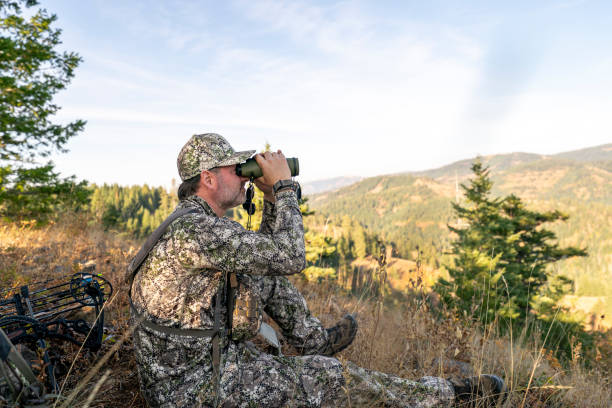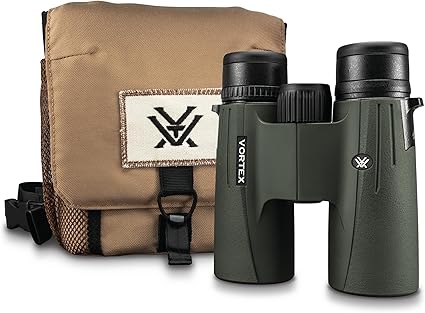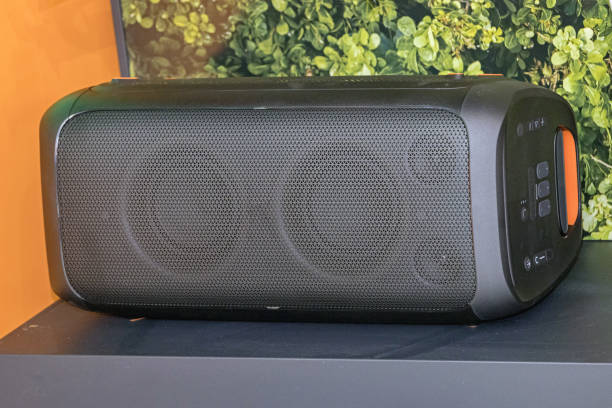The Ultimate Guide to Choosing the Best Hunting Gear

As an avid hunter, selecting the right gear is crucial to your success in the field. The right equipment can make all the difference between a successful hunt and going home empty-handed. With so many options available on the market, choosing the best hunting gear can seem like a daunting task.
In this comprehensive guide, we’ll walk you through everything you need to consider when selecting your hunting gear. From rifles and bows to clothing and accessories, we’ll cover it all. Whether you’re a seasoned hunter looking to upgrade your equipment or a beginner starting from scratch, this guide will help you make informed decisions to ensure you have the best hunting experience possible.
Understanding the Essentials of Hunting Gear
When you think about hunting gear, what comes to mind? Maybe it’s the rifle you carry or the boots that take you through the toughest terrain. But hunting gear is so much more than just the obvious items. Whether you’re a seasoned hunter or someone just starting out, understanding what qualifies as hunting gear and why each piece matters is crucial to having a successful and enjoyable hunt.
So, what exactly is hunting gear? At its core, it’s anything you use during a hunt, from clothing and tools to accessories that help you stay comfortable, safe, and efficient. The right gear can make a world of difference when you’re out in the field, so it’s essential to choose wisely.
Types of Hunting Gear
Hunting gear can be broken down into a few key categories. Here’s a quick rundown of the most essential types:
- Weapons: Whether it’s a rifle, shotgun, bow, or crossbow, your weapon is the cornerstone of your hunt. But it’s not just about having the weapon itself; accessories like scopes, slings, and ammunition are just as important.
- Clothing: The right hunting clothing keeps you comfortable and camouflaged. From base layers that wick moisture to outer layers that protect you from the elements, it’s all about making sure you stay warm, dry, and flexible. And of course, camo patterns that blend you into your environment can help you avoid being detected by your prey.
- Footwear: Trust me, your feet can make or break a hunt. A good pair of boots can keep you going through wet, muddy, rocky, or icy terrain without discomfort. The wrong pair? Well, blisters and sore feet aren’t exactly the best companions on a long day in the field.
- Optics: Binoculars and scopes aren’t just nice-to-haves. They’re game-changers when it comes to spotting your target. Whether you need to scan the landscape for movement or line up your shot with precision, optics are essential for hunting.
- Tools & Accessories: From knives that help with field dressing your game to backpacks that keep your gear organized, tools are what make your hunt more efficient. A well-packed bag can carry everything you need, from snacks to safety gear, while tools like game calls can attract the animals you’re after.
- Safety Gear: No one wants to think about accidents, but being prepared is key. Hunter safety systems, first aid kits, and vests can ensure that you’re protected in case of an emergency.
Key Factors to Consider When Choosing Hunting Gear
Choosing the right hunting gear is not just about picking up whatever looks cool or fits your budget. It’s about making smart decisions based on a few key factors that’ll directly impact your hunt. After all, hunting isn’t just a hobby. It’s an experience, and the gear you choose can make or break it. So, let’s dive into the important things to consider when selecting your gear:
Purpose of the Hunt
Before you even think about what gear you need, consider why you’re hunting. Are you going after big game like deer or elk, or are you more into smaller animals like rabbits or birds? Each type of hunt requires different gear. For example, a long-range rifle and high-powered optics might be essential for big game hunts, while for waterfowl hunting, you’ll need a different set of tools (think: decoys and calls).
In short, the first step in choosing gear is determining what kind of hunt you’ll be doing. The right gear should support the specific needs of the hunt, so think about your target and adjust accordingly.
Climate and Terrain
Where you hunt plays a huge role in the gear you’ll need. If you’re heading into a dense forest during the winter, you’re going to want insulated, waterproof clothing and boots that can handle cold and wet conditions. On the other hand, a hunt in the desert or a warm-weather environment calls for lighter clothing that can keep you cool but still protect you from the elements.
The terrain also affects your gear choices. Are you trekking through thick brush, climbing rocky cliffs, or walking through marshland? Sturdy boots, proper outerwear, and accessories like gaiters or knee pads can make navigating tricky terrain much easier—and more comfortable.
Comfort and Fit
Let’s be honest: hunting can be hard work. Hours of trekking, crouching, and waiting. The last thing you need is gear that doesn’t fit right or feels uncomfortable. A pair of boots that pinch your toes or a jacket that’s too bulky can make you miserable. When selecting gear, always consider comfort and fit.
Look for gear that allows you to move freely without being restrictive. Try on clothing and boots before purchasing to make sure they fit snugly but aren’t too tight. Remember: If your feet or body start to hurt, it can distract you from the hunt and even lead to bigger issues like blisters or overheating. You want to be focused on the hunt, not adjusting your gear.
Durability and Quality
The best hunting gear should be able to handle whatever nature throws at it. Whether you’re crawling through wet underbrush or trudging through snow, you want gear that’s built to last. Durability is key, especially when you’re spending hours, days, or even weeks in the field. Look for materials that can withstand wear and tear, like high-quality leather, durable synthetics, or weather-resistant fabrics.
Keep in mind that while higher-quality gear can come with a higher price tag, it’s often worth the investment. You don’t want to buy something that falls apart after one season. Instead, focus on getting gear that’ll give you years of use, especially for your core items like rifles, boots, and outerwear.
Weight and Portability
If you’ve ever carried a heavy backpack on a hike, you know how important weight is. The same goes for hunting gear. You might be covering long distances, sometimes through challenging terrain, so light but effective gear is essential. Every ounce counts, and you don’t want to be bogged down by unnecessary weight.
Look for gear that is lightweight but still functional. For example, lightweight hunting backpacks can hold everything you need without weighing you down, and compact optics like binoculars can be a game-changer without adding too much bulk. However, balance is key—you don’t want to sacrifice durability for weight savings. Make sure you get gear that’s portable but still performs when you need it most.
Price vs. Quality
When it comes to hunting gear, you get what you pay for. That doesn’t mean you have to go out and buy the most expensive gear available, but remember that investing in quality gear can save you in the long run. It’s about finding that sweet spot where quality meets affordability.
If you’re on a budget, prioritize the most important items first—things like a good pair of boots, a reliable rifle or bow, and quality outerwear. Other items, like specific tools or accessories, can sometimes be purchased later as your budget allows. Just keep in mind that when you’re out there in the field, you don’t want to be left with gear that can’t stand up to the demands of the hunt.
Best Hunting Gear by Category
Now that you understand what factors to consider when choosing hunting gear, it’s time to dive into the specifics. In this section, we’ll break down the best hunting gear by category, so you can make sure you’ve got all your bases covered before heading out into the field.
A. Best Hunting Clothing

The right clothing is essential for staying comfortable, dry, and camouflaged while you hunt. But it’s not just about looking the part. It’s about practicality too. Here’s what to look for:
- Base Layers: The key to staying comfortable, no matter the weather, is layering. Base layers made from moisture-wicking materials (think merino wool or synthetic fabrics) keep sweat away from your skin and help regulate body temperature. When it’s cold, look for thermal base layers that trap heat without adding bulk. Some great options include the Under Armour Base Layer for lightweight warmth or the Smartwool Merino 250 for those extra chilly hunts.
- Outerwear: Whether you’re facing rain, snow, or chilly winds, the right outerwear is a must. Look for waterproof and windproof jackets and pants that can stand up to the elements. Brands like Sitka Gear and Kuiu offer high-performance outerwear that keeps you dry and warm without sacrificing mobility. If you’re hunting in cold weather, consider insulated gear like the Carhartt Quilted Flannel for extra warmth.
- Camouflage: Blending in with your surroundings can be the difference between a successful hunt and a missed opportunity. The best camo patterns depend on your environment, so choose accordingly. For forested areas, something like Mossy Oak Obsession works well, while Realtree Max-5 is perfect for wetlands or fields. A good rule of thumb: the more you match the environment, the less likely you are to be spotted by your prey.
- Gloves, Hats, and Socks: Don’t underestimate the importance of these small details. The right gloves keep your hands warm but still functional, and a good hat helps protect you from the sun or cold. And don’t forget about socks—thick, moisture-wicking socks will keep your feet happy all day long. Brands like Darn Tough make socks that are perfect for long hunts, and ScentLok Beanie is a solid choice for keeping your head in the game.
B. Best Hunting Boots

Your boots are arguably the most important piece of hunting gear. They’re your foundation, and a bad pair can ruin a hunt in no time. Whether you’re trudging through snow, hiking up mountains, or stalking through dense brush, here’s what you need:
- Warm Weather Boots: If you’re hunting in warmer climates, you’ll want something breathable and light, but still protective. Merrell Moab 2 Mid Waterproof boots are a great option—they’re durable, comfortable, and offer great support for lighter treks.
- Cold Weather Boots: When temperatures drop, you need insulated boots that can handle the cold and keep your feet dry. LaCrosse Alphaburly Pro 18″ boots are known for their warmth and durability in extreme conditions. They’re also waterproof, which is a game-changer if you’re hunting in wet or snowy environments.
- Key Features: When choosing boots, always look for good ankle support, waterproofing, and traction. If you’re hunting on rocky terrain or through thick mud, boots with strong tread patterns are essential for maintaining balance and comfort.
C. Best Hunting Optics

Having a clear view of your surroundings is crucial, and good optics are worth every penny. Whether you need binoculars to scan the horizon or a rifle scope to line up the perfect shot, optics can make or break your hunt. Here are some top recommendations:
- Binoculars: A good pair of binoculars should be lightweight, durable, and offer high magnification. Vortex Optics Viper HD 10×42 binoculars are known for their clarity and ruggedness, perfect for spotting game from a distance without weighing you down. If you’re on a tighter budget, the Nikon Prostaff 3S offers great value without sacrificing quality.
- Scopes: For rifle scopes, you want something with a reliable reticle and high-quality lenses. The Leupold VX-3HD 3.5-10x40mm scope offers a crystal-clear view, great magnification, and excellent light transmission, even in low-light conditions. For something more budget-friendly, the Bushnell Banner Dusk & Dawn is a solid choice for hunters looking for value without compromising performance.
- Rangefinders: Getting the right distance to your target is crucial, and a rangefinder helps you make that accurate shot. The Bushnell Elite is a top contender for long-range hunters, offering precision and the ability to calculate bullet drop. For more general use, the Garmin Approach Z82 provides solid rangefinding performance with added GPS features.
D. Best Hunting Weapons
Your weapon is your most important tool while hunting, so it’s essential to choose wisely. Here are some of the best options based on the type of hunting you’re doing:
- Rifles and Shotguns: For big game like deer or elk, a Remington Model 700 rifle is a classic choice, known for its accuracy and reliability. If you’re hunting birds or smaller game, a shotgun like the Benelli Super Black Eagle 3 is an excellent option. It’s versatile, lightweight, and offers smooth performance in all conditions.
- Bows: If archery is your preferred hunting method, a Mathews V3 compound bow is highly recommended for its balance, precision, and smooth draw. If you’re into crossbows, the Ravin R29X offers incredible accuracy and speed, making it perfect for those looking to upgrade their archery game.
- Ammo: Don’t forget about the ammunition! Always match your ammo to your weapon and the type of game you’re pursuing. For long-range hunting, high-quality ammunition like Hornady Precision Hunter is a great choice, as it’s designed for accuracy and terminal performance.
E. Best Hunting Tools and Accessories
From knives to backpacks, the right tools can help you work smarter and not harder while hunting. Here are some must-have items:
- Knives: A sharp, reliable hunting knife is essential for skinning and field dressing your game. The Benchmade Hidden Canyon Hunter is a popular choice for its sharpness and ergonomic design, making it easy to handle even in the toughest situations.
- Game Calls: Whether you’re after ducks, elk, or predators, a game call can help you attract your target. The Primos Hunting The Original Can is perfect for calling in elk, while Flextone Squirrel Call is great for small game hunting.
- Backpacks and Gear Bags: A quality backpack is necessary for carrying all your gear efficiently. The Badlands 2200 Hunting Backpack is durable and features a built-in meat shelf for carrying your harvest. If you’re looking for something more compact, the Tenzing TZ 6000 is a great choice for hunters who need to keep things light and organized.
F. Best Hunting Safety Gear
Safety should always be a priority. Here’s a look at the gear that keeps you protected:
- Hunter Safety Vests & Harnesses: If you’re hunting from a tree stand, a Hunter Safety System LIFElines harness can prevent falls and keep you safe while you hunt. For visibility, a brightly colored vest like the Game Plan Gear Safety Vest ensures you’re seen by other hunters.
- First Aid Kits: Accidents happen, so always carry a basic first aid kit. A compact kit like the Adventure Medical Kits Hiker Medical Kit has all the essentials, including bandages, antiseptic wipes, and pain relievers.
Conclusion
Choosing the best hunting gear is very important. You need gear that is both high quality and useful. This means you should have strong clothing, good navigation tools, and safety equipment.
The right gear can really improve your hunting experience. Invest in items that can handle tough weather and help you perform better. It doesn’t matter if you are a pro or new to hunting; you will need the right gear to have a good hunt.
Please share your favorite hunting gear tips in the comments below! Happy hunting!
Frequently Asked Questions
Where do you buy your hunting gear?
I get my favorite hunting gear from different retailers, both online and in physical stores. I’ve noticed that brands like Sitka Gear provide good quality and performance. Still, it’s a good idea to read reviews and compare prices before buying.
What is the essential hunting gear for beginners?
Beginners should focus on getting good quality base layers, dependable boots, and important safety gear such as a first aid kit. Insulation is very important. Choose wool or synthetic fabrics because they keep you warm, even when wet. Begin with the basics and slowly add more gear to your collection.
What gear is essential for hunting in the winter?
For late-season hunts, it’s important to stay warm and dry. Layer your clothing. Begin with wool base layers for comfort. Then, choose insulated and waterproof outerwear. Also, wear a good pair of insulated boots. They will keep your feet warm and dry in cold temps.
What are the best hunting clothing and equipment brands?
Sitka is at the top of my list because of its smart designs and durability. Many well-known brands, like First Lite and Stone Glacier, also provide great gear made for different hunting needs. Check out various brands to find what fits your likes and budget.
What are the basic hunting tools a hunter needs to hunt?
Essential tools are a sharp hunting knife, a strong saw for clearing paths or handling game, and a useful multi-tool for repairs that come up. Choose durable items that can handle the tough conditions of hunting.
* Voyedy may receive compensation for purchases made at participating retailers linked on this site. This compensation does not affect the products displayed or their order. Learn more here.





